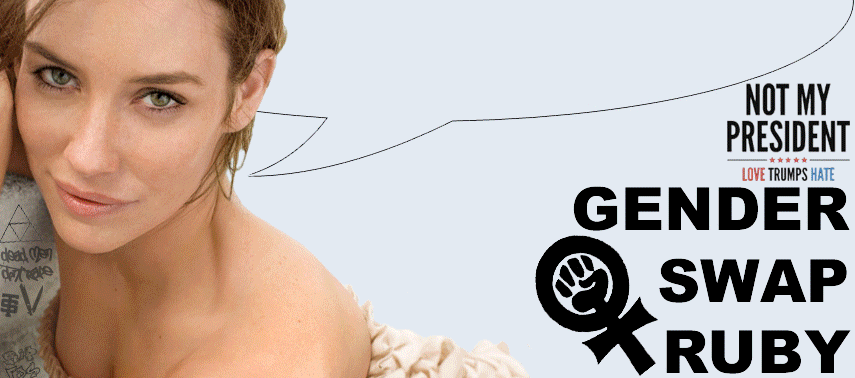or a combination of all three, the second not mitigating unfair monopolizing effectively
Results 1 to 30 of 46
-
full metal merchant








- Join Date
- Sep 2008
- Location
- i daer you to make it out of ferguson alive
- Posts
- 19,583
11-01-2013*call centre crew*
*hate talking to people crew*
*get abused for a living crew*
*sexually harassed by hot women crew*
-
11-01-2013
when you use words like "regulation" and "system" you are implying government, which is the negation of capitalism
-
-
-
full metal merchant








- Join Date
- Sep 2008
- Location
- i daer you to make it out of ferguson alive
- Posts
- 19,583
11-01-2013hey jon if consuming is good for the economy, then would you say raising the minimum wage would create more consumption?
*call centre crew*
*hate talking to people crew*
*get abused for a living crew*
*sexually harassed by hot women crew*
-
11-01-2013
capitalism, correctly imagined, is a society of self-governed parties, engaging in mutually beneficial voluntary exchange, all free to produce and consume
government, correctly imagined, is a single designated party (a monopoly) for final arbitration, requiring compliance (implies involuntary) to function, which itself does not produce by statute, meaning no exchange with it is mutually beneficial (rather, as apologists would point out, when private parties disobey and use force/fraud between each other, government settles the matter at a loss, and then all of society must account for that loss through taxation)
note that crime still exists in both.
in a free market capitalist society -- although we have little evidence because anarchist communities do not pop up very often -- it is obvious to anyone rational that individuals will still disobey, and commit crimes, because there is nothing stopping them.
in a government regulated "capitalist" society -- which we have had in all western civilizations for a very long time, and which demonstrate we have crime both in and out of government -- it is obvious to anyone rational that individuals will still disobey, and commit crimes, because there is nothing stopping them.
capitalism, however, does not "fail" when individuals commit crimes and engage in involuntary exchange whether by force or fraud. that individual, committing that transgression, fails, and has signaled to society that they will not treat you according to the rules, and that they implicitly agree they should not be treated according to the rules, either.
government "fails" regularly -- individuals entrusted to it commit crimes using it -- about a dozen times every day in the US. and that means, not just on the side, and not just taking advantage of a situation, like insider trading, but actual crimes: kidnapping, theft, summary execution.
government also "fails" on theory, according to the contemporary and more extensive (irrational) definition that the addition of nanny-state government to a capitalist society deters crime above and beyond merely arbitrating ex post facto -- an argument that progressives desperately need to make, since after all private arbitration was much preferred to government throughout US history, having had both available simultaneously for a time during the transition to a confederacy and then a federated republic, and still in fact exists even today (although it is regulated to a pre-legal option for a limited range of civil disputes only and cannot issue legally binding decisions).
you'll recognize this argument because progressives believe it fervently, yet lambasted it over the lack of evidence of WMD in iraq.
despite there being no true-positive indicator that crime is deterred by any mechanism at all, be it privately-owned handguns or public police forces, it is politically incorrect to point out that nothing is stopping anyone from committing great crimes (like school shootings?) under the imposition of government.
it is identical to the argument that, through invasion, "we" could prove there were or were not WMD in iraq, because if we never found them, they might still be there. no matter how much government invades society, if "we" take it away, the progressive can be sure crime will proliferate. that is what is truly bad, poor quality, and a systemic failure: the progressive mind.
-
-
-
-
11-01-2013
regulation was the cause of the recent banking issues, more regulation is not the solution.
-
full metal merchant








- Join Date
- Sep 2008
- Location
- i daer you to make it out of ferguson alive
- Posts
- 19,583
11-01-2013okay well what do you guys think of regulation that prevents farmers from being exploited and being forced to sell their products for very low prices or not have any sales at all, do you think regulation that protects farmers is a good idea?
*call centre crew*
*hate talking to people crew*
*get abused for a living crew*
*sexually harassed by hot women crew*
-
11-01-2013
prevents them from being exploited? the regulations themselves are the exploitation
it's just a fact of life that products sometimes do not sell for enough money in order to sustain a business, sometimes to sustain an entire industry
all that means is that demand is elsewhere, and that's a good thing, knowing where demand is
the question is actually posed backwards: the customer is always right
-
11-01-2013
raise your hand if you want to drive your buggy-whip to a dentist who is going to fashion you a wooden tooth
people imagine in their heads that government regulation is the only reason that advances in technology ever happen; that we would all be using some shitty old technology if not for government forcing businesses to innovate, but that's ass backwards -- and the personal computer market proves it
-
11-01-2013
barry are you sure you want to even know what i have to say about any of this? in our lifetimes, it's going to be pretty dangerous to think and say these things in your country
-
11-01-2013
your government, like most western governments, just wants a nation of lisas working in the service industry at home, and to import all their actual physical goods from the orient, while providing them with competative (vs switzerland, US, britain) financial services (aka exporting inflation)
-
11-01-2013
they also want a handful of people as rowdy as siburke, as malleable as sigge, and as violent as teknorat, to wear their military uniform, plus a few cags to sit in the JAG office and get raped so the grunts don't flip their shit and overthrow the government
-
-
-
11-01-2013
Governments and central banks have taken both regulatory and free market approaches to monetary policy. Some of the tools used to control the money supply include:
changing the interest rate at which the central bank loans money to (or borrows money from) the commercial banks
- currency purchases or sales
- increasing or lowering government borrowing
- increasing or lowering government spending
- manipulation of exchange rates
- raising or lowering bank reserve requirements
- regulation or prohibition of private currencies
- taxation or tax breaks on imports or exports of capital into a country
In the US, the Federal Reserve is responsible for controlling the money supply, while in the Euro area the respective institution is the European Central Bank. Other central banks with significant impact on global finances are the Bank of Japan, People's Bank of China and the Bank of England.
-
full metal merchant








- Join Date
- Sep 2008
- Location
- i daer you to make it out of ferguson alive
- Posts
- 19,583
11-01-2013a free market = dog eat dog, only the monopolies will survive, you have to be completely innovative or bring new ideas to the table to get anywhere.
you guys seem to only care about regulation as a whole as if nothing good has come from it, poor regulation gives regulation a bad name to conservatives.
even with regulations(which are poorly made) farmers get exploited for their products by big companies, without regulation this would continue to happen. properly planned and thought out regulation to control produce and put a limit on price gauging can help farmers, have you heard of your local grocer marking up their vegetable goods by up to 5000% of what they paid for them? guess who is getting the shit end of the stick; the farmers AND the people, if there was proper regulation in place to stop this it would help curb productivity exploitation.
the customer is always right? thats full of shit jon.*call centre crew*
*hate talking to people crew*
*get abused for a living crew*
*sexually harassed by hot women crew*
-
-
full metal merchant








- Join Date
- Sep 2008
- Location
- i daer you to make it out of ferguson alive
- Posts
- 19,583
11-01-2013a true free market is essentially putting zero rules, and allows anyone to do what they want, but you keep forgetting that not everyone is going to make money ethically and youre going to get exploitation
*call centre crew*
*hate talking to people crew*
*get abused for a living crew*
*sexually harassed by hot women crew*
-
-
full metal merchant








- Join Date
- Sep 2008
- Location
- i daer you to make it out of ferguson alive
- Posts
- 19,583
11-01-2013"i approve of exploitation of the majority" -typical free marketer logic
*call centre crew*
*hate talking to people crew*
*get abused for a living crew*
*sexually harassed by hot women crew*
-
-
11-01-2013
barry take this topic to an independent dairy farmer, a person who works dawn to dusk seven days a week. But god forbid he set the price of his own milk at market.

-
-
-
-
Thread Information
Users Browsing this Thread
There are currently 1 users browsing this thread. (0 members and 1 guests)








 is bad
is bad













